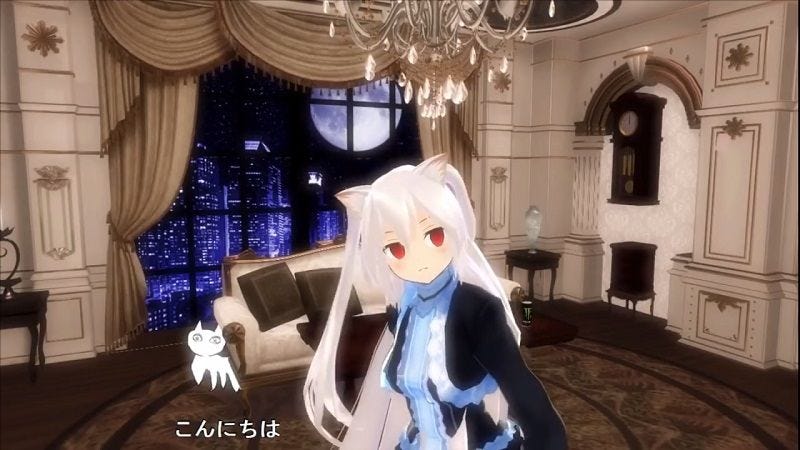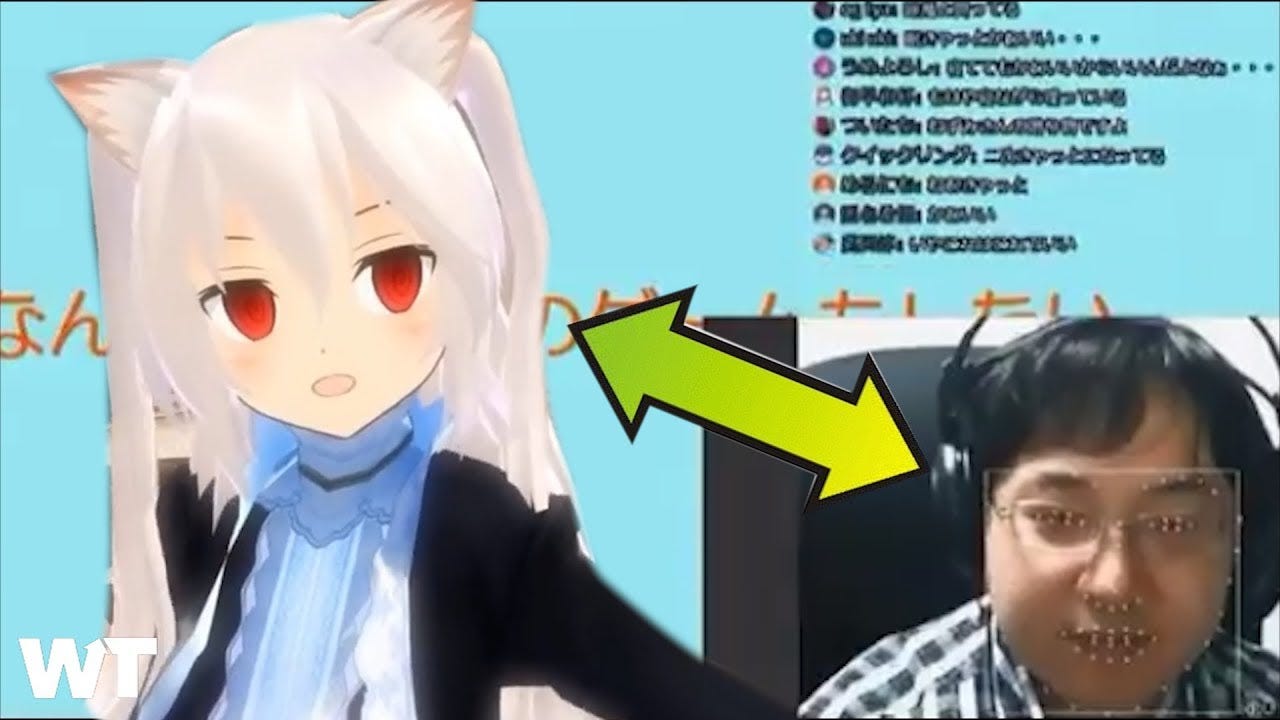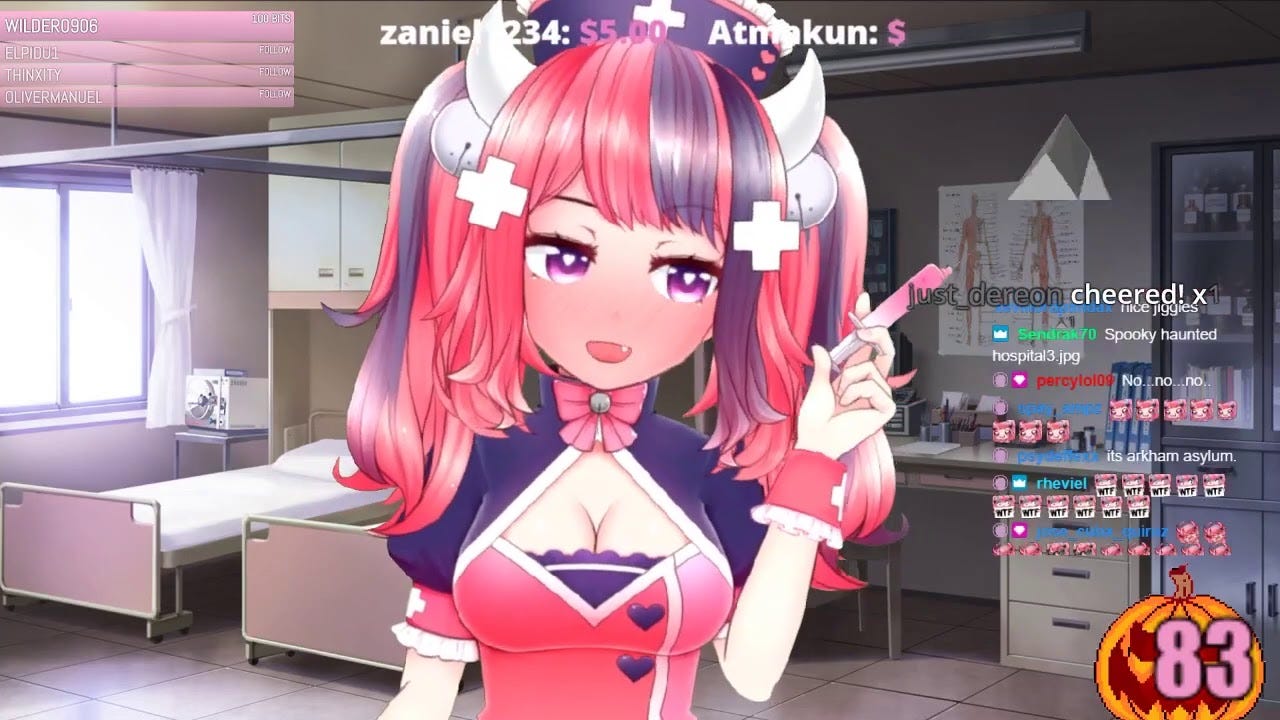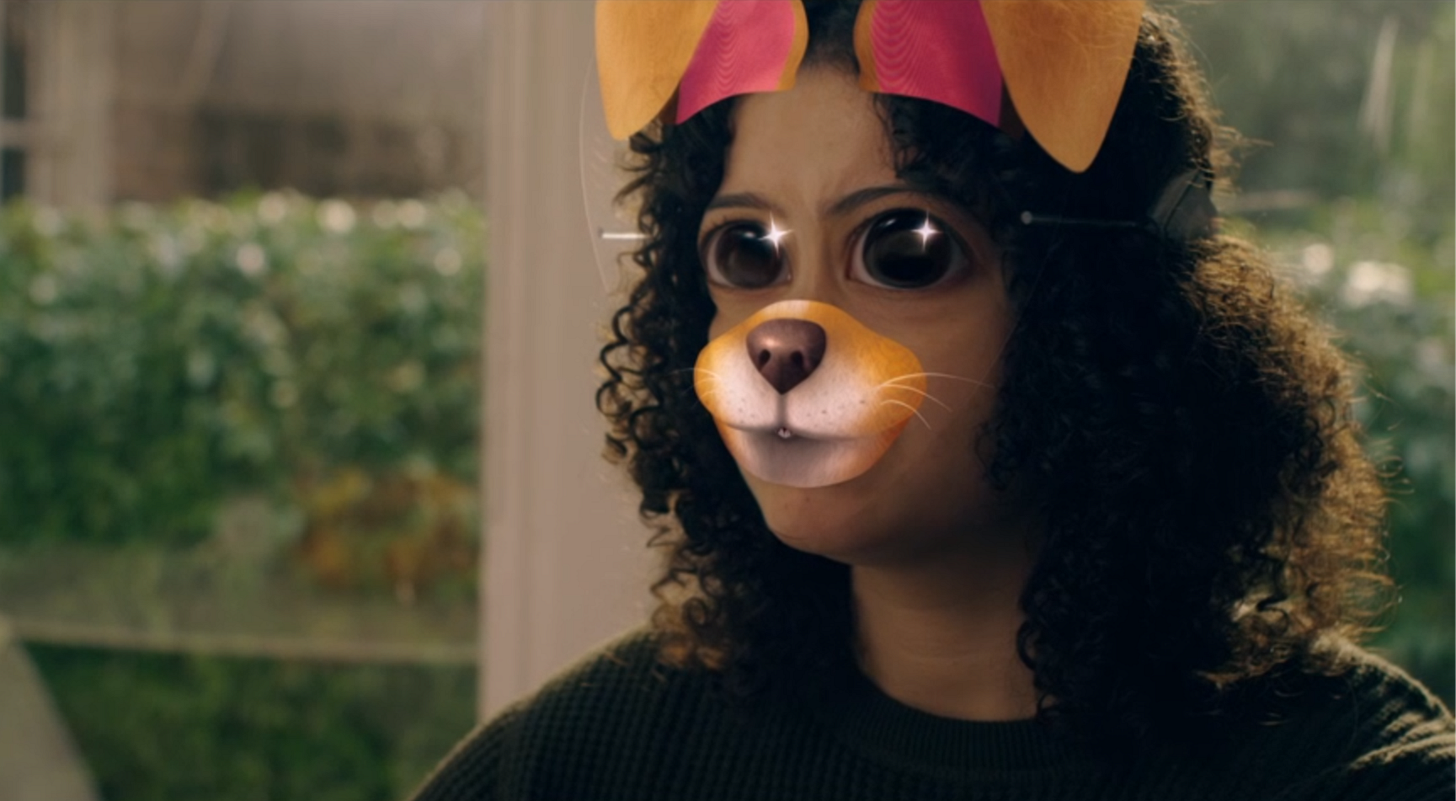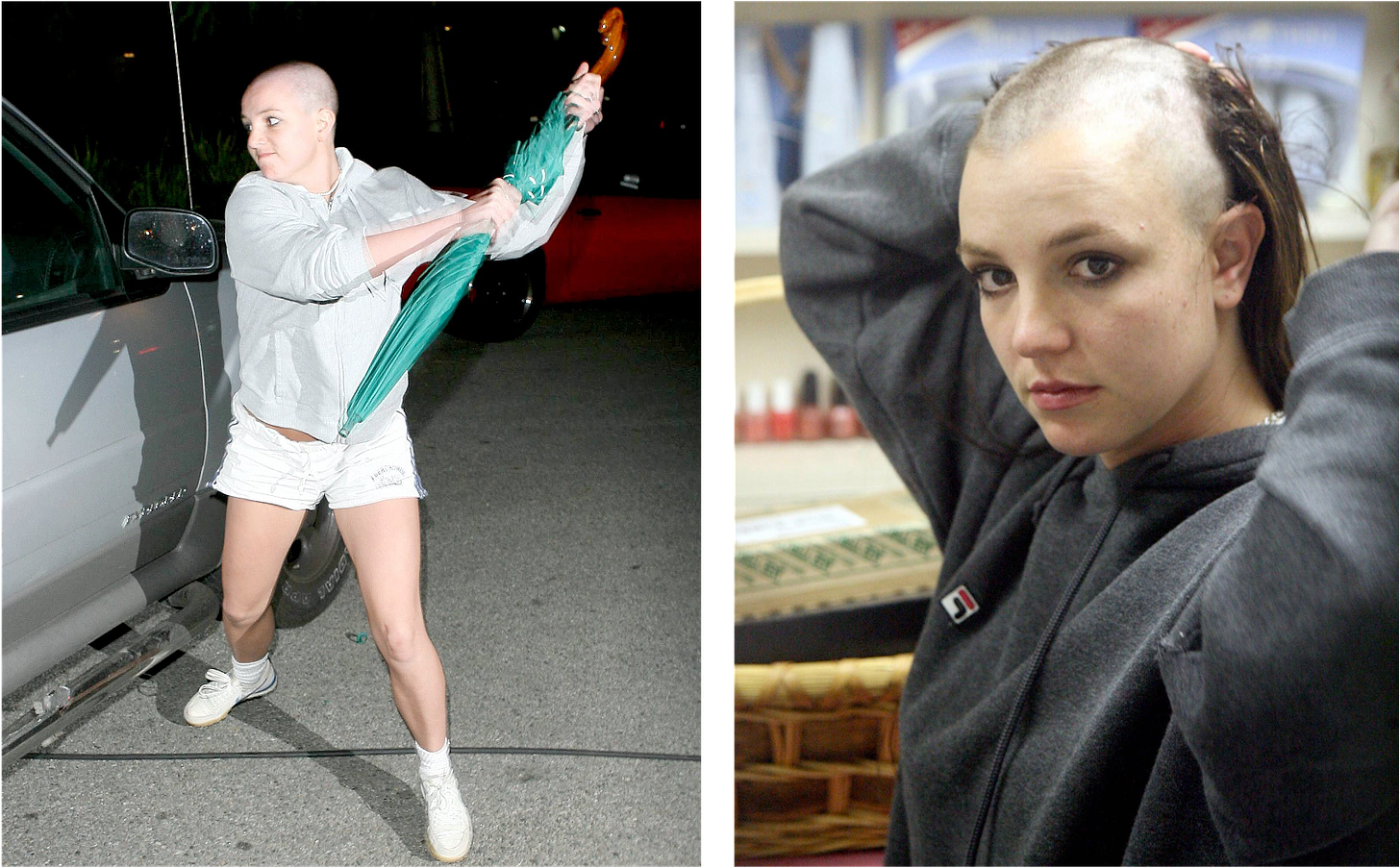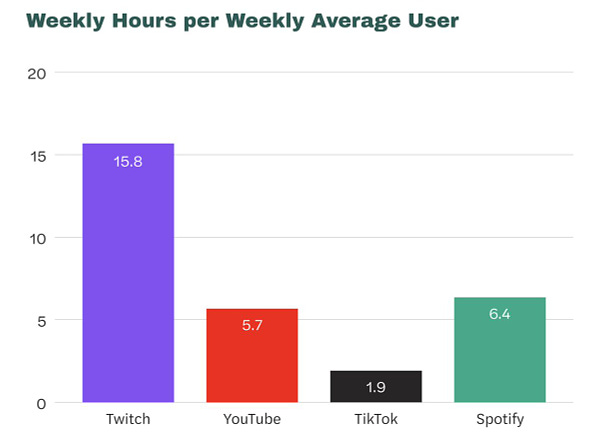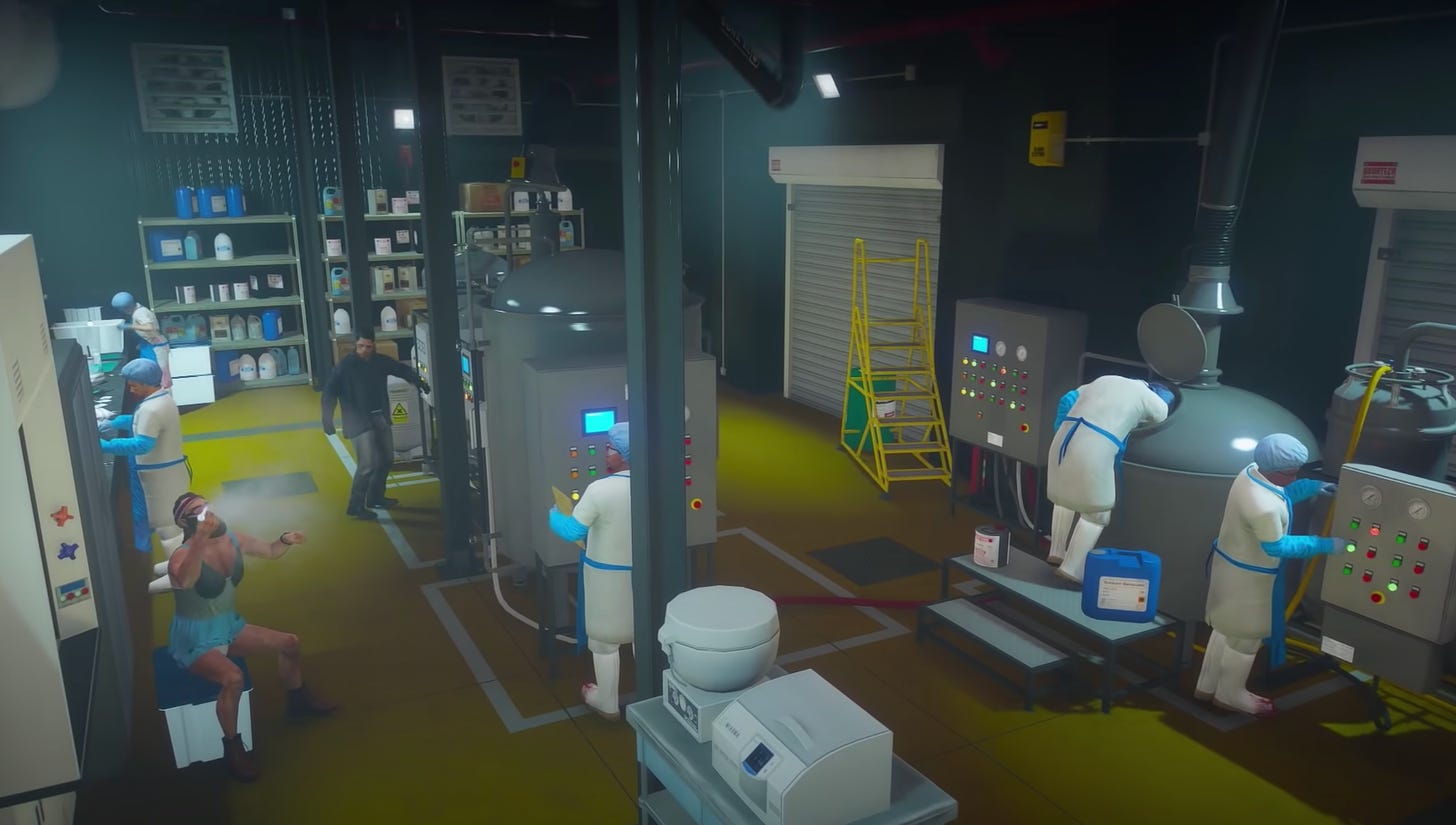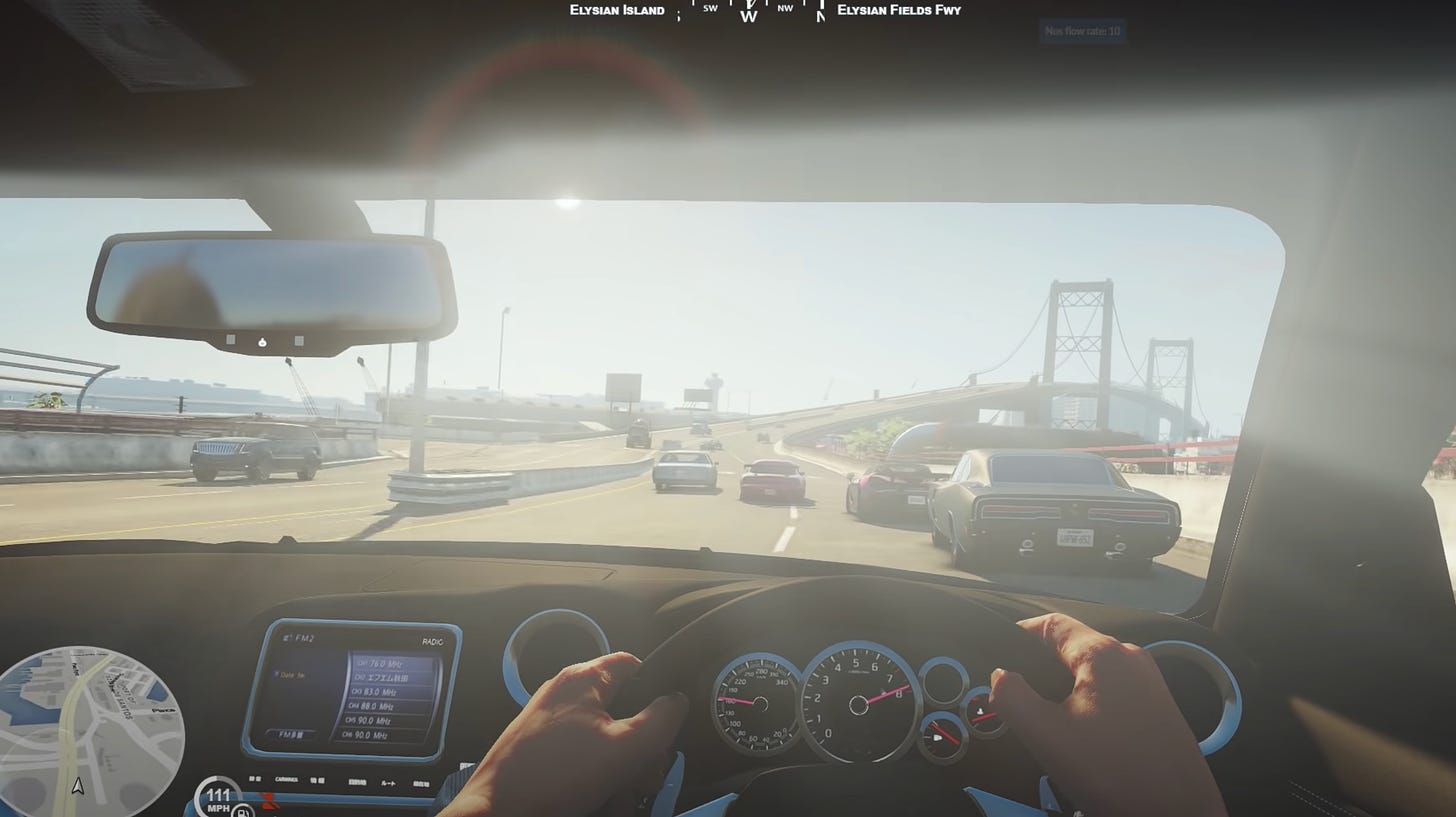This is a weekly newsletter about how people and technology intersect. To receive this newsletter in your inbox each week, subscribe here:
Hi Everyone 👋,
This is the third and final entry in a three-part series on digital identity. I didn’t intend to write a series of posts on this topic, but that’s what it’s become 🤷🏼♂️
In the first part, The Rise of Synthetic Media and Digital Creators, I introduced synthetic media, deepfakes, and virtual influencers.
In the second part, Avatars in the Metaverse, I wrote about how the Proteus Effect reveals that our online personas change how we view ourselves and others.
And in this part, I’ll explore why we seek digital identities and how these identities enable both self-expression and anonymity.
These are important topics as we spend more of our time online and as our digital personas bleed into—or even eclipse—our offline identities.
Transhuman: The Rise of Digital Identities
Nora Cat was an early vTuber, or virtual YouTuber. Like many Japanese vTubers, Nora Cat took the form of an anime girl.
Nora Cat used motion-sensing technology to convert her body movements and facial expressions into computer-animated forms; she overlaid a digital persona over her real self, masking her identity.
One day while streaming in 2018, Nora Cat’s technology glitched. Viewers caught a glimpse of the real person behind Nora Cat and were shocked to realize Nora Cat was a middle-aged man.
vTuber glitches aren’t uncommon. One woman faced a backlash when her filter malfunctioned, revealing to her 100,000 followers on Douyu (China’s Twitch) that she looks nothing like her virtual identity. The incident prompted a heated discussion about beauty standards.

Theonemanny (369K Twitch followers) is a popular streamer who plays video games in the form of a dog (yes, it’s a thing). The dog mimics his facial expressions and movements, so that no one ever sees his real face.
On one stream, the tech failed and the “man behind the curtain” was revealed. You can watch the highly-entertaining 30-second clip here.
vTuber glitches can be equal parts fascinating and devastating for viewers, who get a glimpse into a creator’s real identity but also have a carefully-crafted illusion shattered. For many virtual creators, a glitch is a catastrophe. The creator Nyanners (1.22 million YouTube subscribers) says, “I live in fear of a glitch exposing my identity.” When asked what her family and friends think of her life as a virtual creator, she says, “Nobody knows.” Being a vTuber is her private outlet for expression.
Anonymity is key. Being a virtual creator is about enjoying the self-expression and creativity that come with creating content, while avoiding the scrutiny and invasion of privacy that have traditionally accompanied fame.
This is what makes Miko so unique. Miko, who I wrote about last month, gives her viewers a glimpse into the behind-the-scenes. She’s the rare virtual creator who exposes her identity.

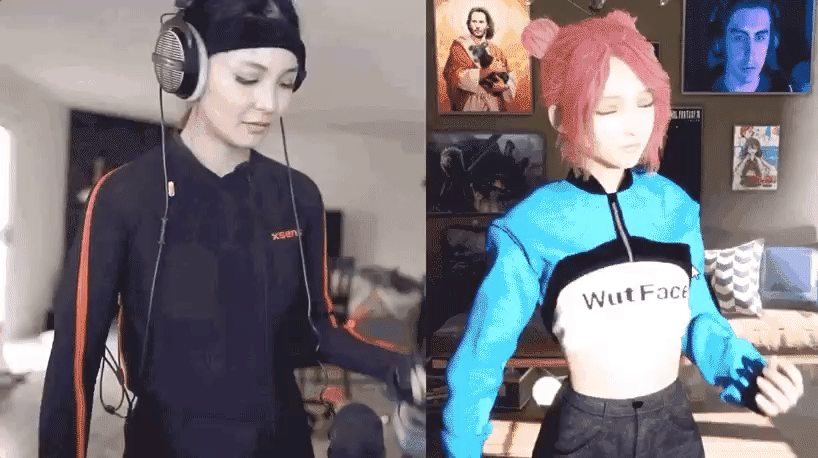
But most creators aren’t like Miko. They protect their digital personas and go to great lengths to preserve anonymity. Many even use voice-masking technology to create synthetic voices.
Ironmouse is one of the world’s most popular vTubers, with over 500K followers on Twitch. Her avatar is a pink-haired anime girl.
Asked how she defines a vTuber, Ironmouse says, “Someone who expresses themself on the internet using a digital persona.”
Ironmouse became a vTuber because she has Common Variable Immune Deficiency, or CVID, a disorder that impairs the immune system. Growing up, she was constantly sick and didn’t make many friends. In her words:
“I got so sick that I couldn’t go out. And my contact with people was very limited and I felt like I couldn’t really be a human. So I started being a vTuber.
“Being a vTuber allows people this unique creative outlet that they might not otherwise have due to anxiety or disabilities or life circumstances.”
When Ironmouse couldn’t find belonging or friendship in the analog world, she turned to the internet. Her digital identity has now become her primary identity:
“I have never felt more myself than I have in this digital body. I’m at a place where I can be proud and happy of who I am, and allow myself to feel happiness and to feel excited about life, because it was very rough before.”
In the 2019 BBC show Years & Years, there’s a plotline in which a young girl comes out to her parents as “transhuman”. The show is set in a future in which AR filters can be permanently overlaid over your face—the girl is rarely seen without a Snapchat-like puppy filter. Her parents have to tell her, “No filters at the dinner table.”
In coming out as transhuman, the girl tells her parents, “I don’t want to be flesh. I want to be digital.” It’s a jarring scene —here’s the full scene on YouTube—but it captures a future in which people feel more drawn to their digital personas than their real ones. The show’s use of the puppy filter—Snapchat’s most famous AR filter—is a commentary on how our real and digital identities are already blurring.
The Years & Years plotline is exaggerated and a little dystopian, but it captures what Ironmouse and other vTubers are demonstrating: online, you can be anyone—a different age, a different gender, a different body type—and that flexibility unlocks new levels of self-expression.
Divorcing Fame from Scrutiny
Watching Hulu’s new documentary Framing Britney Spears, I kept thinking the same thing: people are cruel. Traditionally, being in the public eye has meant being subject to that cruelty. One line from the Apple TV+ series The Morning Show sums it up best. An executive is trying to persuade another executive that keeping Jennifer Aniston’s news anchor on air will boost ratings. His argument: “Watching a beloved woman’s breakdown is timeless American entertainment.”
As a society, we’re (finally) beginning to realize how cruel we were to celebrities like Britney Spears, Lindsay Lohan, and Demi Lovato. But just as we’re realizing how cruel we were to famous people, we’re being cruel to each other on a micro-level through social media. Gen Z is shifting us to “nicer” and more “authentic” ethos, which I wrote about in The Rejection of Internet Perfection, but the pendulum swings slowly. With all the vitriol online, who would want to be famous?
Being a virtual creator means that fame is no longer synonymous with having your private life dissected, being stalked by paparazzi, being ridiculed on internet message boards.
Having a million YouTube or Twitch subscribers, like the vTubers mentioned above, used to mean being under society’s microscope. Now, everyone can express themselves online without sacrificing privacy.
And for the millions of people who don’t like how they look or who don’t feel confident in their bodies, they can choose digital representations that better map to how they want to be seen.
NoPixel: Your Digital Identity
People spend a lot of time with virtual creators. Fans engage with creators for hours every week on Twitch and YouTube.
But in addition to being virtual creators, people are becoming virtual characters. Allow me to digress for a moment and talk about something called NoPixel.
NoPixel is a role-play server within Grand Theft Auto. It’s one of the most fascinating virtual worlds on the internet. Here’s how it works.
First, you create your character. You customize your hair, your clothing, your accessories. Then you apply to join NoPixel. As part of the application, you answer questions in character. A sample question: “You’ve found what looks like a random car in the street with a load of drugs inside. What do you do and why?”
The goal of role-play is to create an immersive experience—essentially to create a realistic virtual world. At all times in NoPixel, you must talk and act as your character.
Every player in NoPixel starts with $5,000—to get more money, you have to earn it. Some choose life as a civilian, working as a car salesman, a bartender, a garbage truck drivers. Others choose a life of crime. They rob banks, take hostages, run drug cartels. One person I know operates a meth lab in NoPixel.
There are consequences for criminals. Policemen—played by real-life people—want to arrest you. You might find yourself in court appealing to a judge—also played by a real-life person.
And NoPixel has a robust digital economy. Everyone is taxed. If you don’t like the tax rate, you can actually vote for a new mayor with new policies.
NoPixel is fascinating because it lets anyone take on a new digital persona within a realistic world. Just as virtual creators can make content and reach an audience while preserving anonymity, NoPixel lets you have an entire life as someone else. No one needs to know your real identity. You can be a middle school choir teacher in Iowa, but moonlight as a drug kingpin in NoPixel. Your digital persona can become as important to you as your real-world identity.
Final Thoughts
I’ve written about David Foster Wallace before, but I’ll mention him again here because he understood how people and technology intersect. He also understood that even though technology changes, human nature doesn’t.
In his 1996 book Infinite Jest, David Foster Wallace predicted a futuristic device called a “video phone”. This was 11 years before the iPhone and 15 years before Zoom. Foster Wallace wrote about how video calls will force us to stare at our own faces in horror:
“This appearance-check was no more resistible than a mirror. The experience was universally horrifying. People were horrified at how their faces appeared on-screen.
“The videophonic stress was even worse if you were at all vain. I.e. if you worried at all about how you looked. As in to other people. Which all kidding aside who doesn’t.”
Millions of people don’t like how they look, much less how they look magnified on a high-resolution screen. And millions more don’t like their “boring” offline lives. These are the catalysts for digital personas: the opportunity to be someone else—maybe someone who better aligns with your sense of self.
Of course, nothing should replace or can replace the vividness of real life. But people can augment their lives with digital personas that let them express themselves in new ways. As a virtual creator, someone can entertain or teach millions of people while preserving anonymity. As a character in NoPixel, you can have a thriving identity completely distinct from your analog life.
Since the dawn of the social internet, we’ve been creating digital personas for ourselves. What started as AIM screen names and customized Myspace pages evolved into curated Instagram feeds and LinkedIn profiles. Now, it’s more accessible than ever to create your persona in vivid detail. What might seem far-fetched today—anime vTubers and video game drug lords—are signs of where the world is going: everyone will have a vibrant, three-dimensional digital persona to go alongside their offline identity.
Sources & Additional Reading
I Spent a Day with VTubers | Life Behind the Avatar
Chris Paik for inspiring parts of this piece and being a fellow vTuber enthusiast
What Are No Pixel Servers? | Dote Sports
Thanks for reading! Subscribe here to receive this newsletter in your inbox each week:



